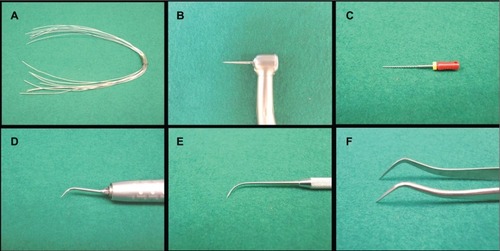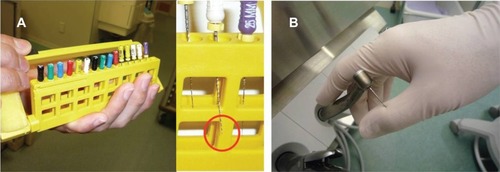Figures & data
Table 1 Contents of occupational injuries
Table 2 Title of injured worker
Table 3 Prevalence of occupational injury
Figure 1 Typical sharp instruments. A) Stainless steel wires (0.4 mm in diameter). B) Dental turbine hand piece with diamond bur. C) File. D) Ultrasonic hand scalar with scalar tip. E) Explorer. F) Dental forceps.

Table 4 Questionnaire regarding motivation for wearing protective eyewear and the answers
Table 5 Rate of agreement with the information or assumption that most strongly persuade one to use protective eyewear
